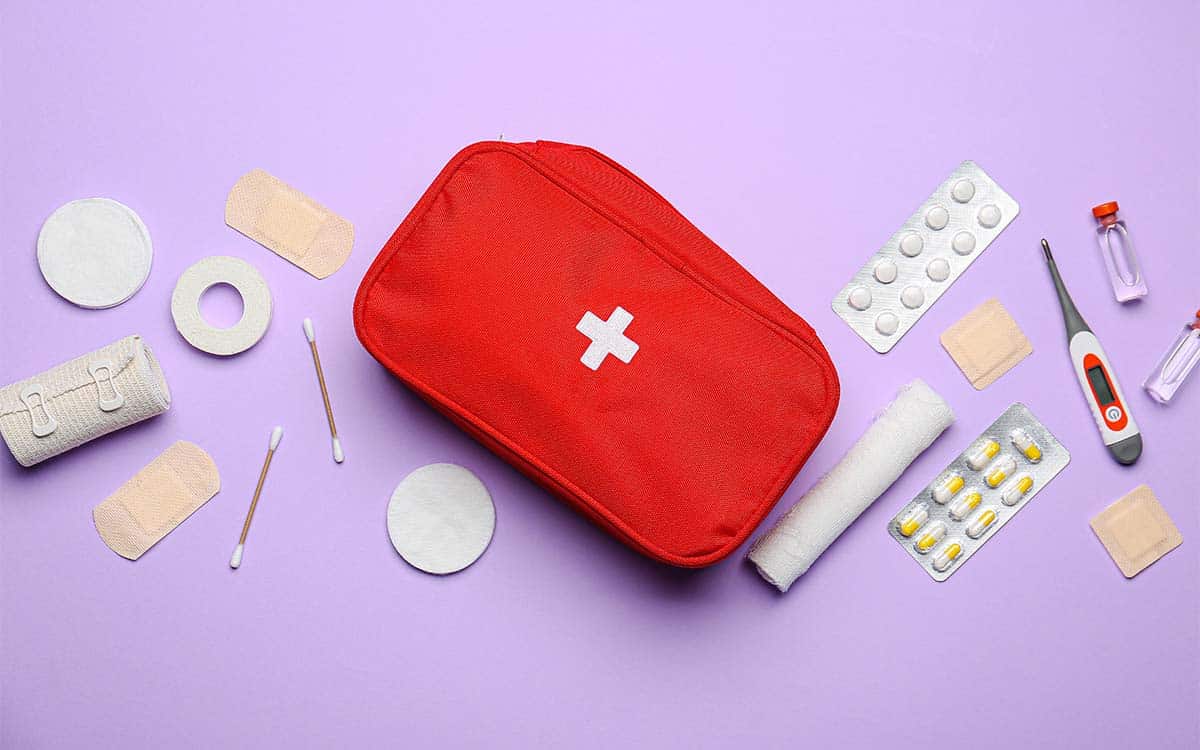It can be scary when your child, spouse, family member, or a friend gets injured. Do you know what to do? How do you handle the situation? Do you have the right supplies? Who do you call? The first thing to remember whenever there is an injury or emergency is to stay calm. Panicking will not help anyone. Secondly, you want to be prepared for injuries and / or emergencies. Be familiar with your household member’s medical conditions so that if an emergency arises you know what to do and who to call. If you feel inclined, consider taking a CPR class. At the very least every house should have a basic first aid kit. Use this as a guide to the first step to assembling your first aid kit so that you have the supplies you need when an injury or medical emergency occurs.
Supplies
You can buy a first aid kit that already has all the needed supplies or you can assemble your own first aid kit. The supplies of your first aid kit may vary depending on the medical conditions your family members have. For example, if someone in the family is a diabetic, you may want to include glucose tabs in your kit in case of hypoglycemia or if someone has a severe allergy your kit may contain an Epipen. The American Red Cross recommends the following materials for a basic first aid kit for a family of four:
- 2 absorbent compress dressings (5 x 9 inches)
- 25 adhesive bandages (assorted sizes)
- 1 adhesive cloth tape (10 yards x 1 inch)
- 5 antibiotic ointment packets (approximately 1 gram)
- 5 antiseptic wipe packets
- 2 packets of aspirin (81 mg each)
- 1 emergency blanket
- 1 breathing barrier (with one-way valve)
- 1 instant cold compress
- 2 pairs of non-latex gloves
- 2 hydrocortisone ointment packets (approximately 1 gram each)
- One 3 in. gauze roll (roller) bandage
- 1 roller bandage (4 inches wide)
- Five 3 in. x 3 in. sterile gauze pads
- 5 sterile gauze pads (4 x 4 inches)
- Oral thermometer (non-mercury / non-glass)
- 2 triangular bandages
- Tweezers
- Emergency First Aid guide
Reminders
Remember to check your first aid kit at least every year to make sure your supplies are stocked and up to date. Write down any important phone numbers you may need such as doctor’s offices or urgent care and place them in your kit so you have them handy. Remember to not delay calling 911 if a serious life-threatening emergency happens. You may also want to consider storing another first aid kit in your vehicle to have it when out on the road or in another location.
Resources
- Make a first aid kit. Supplies & Contents | American Red Cross. (n.d.). Retrieved August 10, 2022
